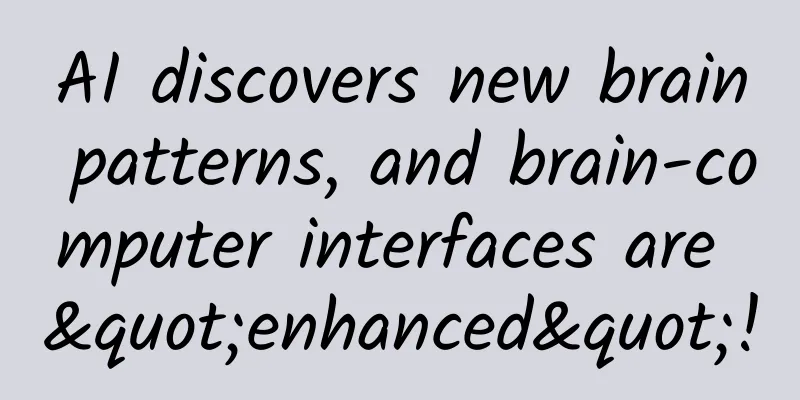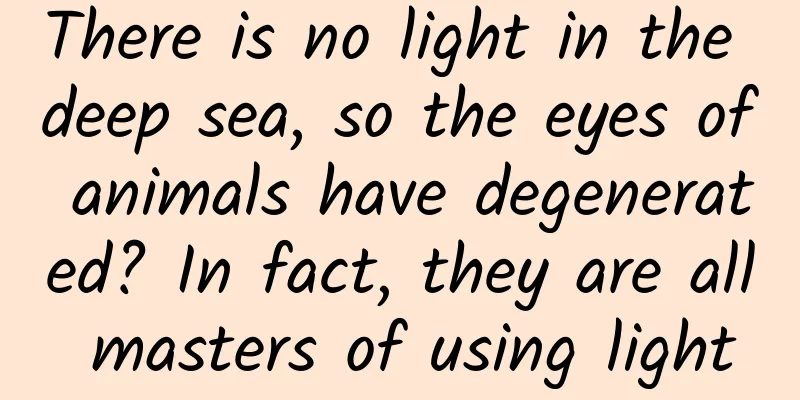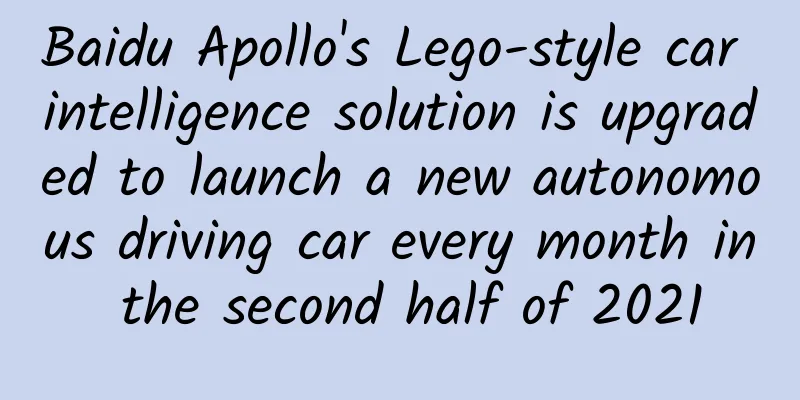AI discovers new brain patterns, and brain-computer interfaces are "enhanced"!

|
Written by | Ma Xuewei Preface When you start reading this article, you may unconsciously reach for a cup of water, take a sip of water, or turn your head to reply to someone else's message. These seemingly simple actions actually trigger different encoding processes in the brain, and they occur synchronously, forming an intricate pattern of brain activity. However, for paralyzed patients, their thoughts cannot be translated into specific muscle movements. In recent years, brain-computer interface technology has attracted much attention. It can interpret patients' thoughts and transmit their commands to external devices (such as robotic arms), thereby helping them regain their mobility. However, there is a key problem: the neural networks in the brain are not simple linear superpositions, but involve complex nonlinear relationships, which makes it difficult to parse the simultaneous encoding. Distinguishing the brain encoding of specific behaviors from the encoding of other behaviors remains a major challenge. Recently, a research team from the University of Southern California and the University of Pennsylvania developed an artificial intelligence (AI) algorithm - DPAD (Dissociative Prioritized Analysis of Dynamics), which can effectively distinguish the brain patterns of specific behaviors from other simultaneous brain activities , improve the accuracy of decoding movements from brain activities, and thus significantly improve the performance of brain-computer interfaces. The research team said that this method can not only accurately decode movements from brain activity, but also help reveal new patterns in the brain that may have gone unnoticed , thereby developing more powerful brain-computer interfaces, such as treating movement disorders and paralysis as well as mental illness. The related research paper titled "Dissociative and prioritized modeling of behaviorally relevant neural dynamics using recurrent neural networks" has been published in Nature Neuroscience, a subsidiary of Nature. It is worth noting that this algorithm is extremely flexible and may be used in the future to decode psychological states such as pain or depression , helping to better treat mental health conditions by tracking patients' symptom status as feedback and precisely tailoring treatment plans to their needs. Unraveling the complexity of neural networks DPAD is a nonlinear dynamic modeling method that uses a recurrent neural network (RNN) architecture and training method. DPAD uses a two-section RNN architecture to learn behavior-related neural dynamics and other neural dynamics separately, aiming to address the challenges of existing methods in modeling neural-behavioral transitions, such as nonlinear, dynamics modeling, separation and prioritization of behavior-related neural dynamics, and modeling of continuous and intermittent behavioral data. Figure|DPAD structure overview. It has a wide range of application values in the field of neuroscience. The research team demonstrated five application scenarios of DPAD by analyzing four different non-human primate datasets: Improving the accuracy of neuro-behavioral predictions: DPAD predicts behavior more accurately by prioritizing learning of behaviorally relevant neural dynamics and capturing nonlinear relationships in transformations. In data from multiple neural modalities, DPAD's prediction accuracy is superior to both linear and nonlinear dynamic models. This means that DPAD can better understand how neural activity is transformed into behavior and provide a more reliable model for the development of neurotechnology. Extracting nonlinear dynamical transformations for behavioral prediction: DPAD can automatically identify nonlinear dynamic transformations in raw local field potential (LFP) activity, and its ability to predict behavior is better than traditional LFP power features. In some data sets, DPAD's predictive ability even exceeds that of neuronal discharges. This shows that DPAD can extract more behaviorally predictive information from LFP data, providing new ideas for the analysis of LFP data. Implementing nonlinear neural dimensionality reduction for behavior prediction: DPAD is able to achieve nonlinear neural dimensionality reduction by extracting low-dimensional latent states while retaining behavioral information. This means that DPAD can extract more concise representations from raw neural data while maintaining behavioral prediction capabilities. This is of great significance for large-scale processing and analysis of neural data. Verify the origin of the nonlinear transformation: DPAD can determine the origin of nonlinearity in neural-behavior transformations through hypothesis testing, such as latent state dynamics, embedding mapping, or behavioral readout mapping. In multiple motor-related datasets, DPAD found that nonlinearity mainly exists in the mapping of latent states to behaviors. This provides new hypotheses and testing directions for future experiments, which will help to gain a deeper understanding of the nonlinear mechanisms of neural computation. Extension to non-continuous and intermittent data: DPAD is able to process behavioral data that is sampled intermittently, such as reports of emotions. This makes it suitable for fields such as affective neuroscience and neuropsychiatry. DPAD is also able to process behavioral data with non-continuous values, such as decision choices. This further expands the scope of DPAD's applications in neuroscience and neurotechnology. However, DPAD also has certain limitations. For example, the optimization objective function of DPAD is non-convex, so it cannot be guaranteed to converge to the global optimal solution. In addition, the quality of the model and its neurobehavioral prediction ability depend on the characteristics of the dataset, such as the signal-to-noise ratio. In the future, DPAD can be used to test nonlinearities in more brain regions to gain a more comprehensive understanding of neuro-behavioral conversion. Secondly, DPAD can also be used to study other signal conversions, such as signal conversions between different brain regions, and brain responses to electrical or sensory stimulation. In addition, DPAD can also be applied to social interactions, recording brain activity of two subjects simultaneously to discover shared cross-subject dynamics in social interactions. When AI meets neuroscience Human and animal neural networks are the inspiration for the basic model of AI, "neural network", and conversely, AI is now also showing its prowess in the field of neuroscience. In recent years, AI has made many breakthroughs in the field of neuroscience. For example, last July, the Kellogg Eye Center at the University of Michigan and its collaborator research team launched multiple AI frameworks that can be applied to ophthalmic imaging on the International Space Station to better understand the pathophysiology of space adaptation syndrome (SANS) and develop preventive measures. In January this year, a research team from the University of Palermo and its collaborators explored new evidence on the role of AI in supporting the diagnosis and classification of migraine and its management, including determining outcome measures, personalized treatment, and prediction of treatment response. In their study, they found that AI has great potential in the diagnosis and treatment of migraine and can help patients get better treatment and management. In August, in a new study, an AI-driven brain implant developed by a research team from the University of California, Davis Health Center and its collaborators successfully converted brain signals into speech, allowing aphasia patients to speak again with an accuracy rate of up to 97.5%. The combination of AI and neuroscience not only promotes each other, but also opens up new research paths. In the future, this interdisciplinary collaboration is expected to bring more revolutionary breakthroughs in the treatment of neurological diseases, the development of neural repair technology, and the in-depth understanding of brain function. |
Recommend
How can a startup brand carry out marketing promotion?
This article combines marketing promotion theory ...
Weekly Science and Technology Talk丨"Forest Rangers" Flying in the Sky? See how satellites "protect" forests!
The 2022 China Land Greening Status Bulletin rele...
Shen Yifan shows you how to use mind mapping to develop your strongest brain
Yifan will help you master mind mapping and devel...
Tieling SEO Training: 2020 SEO Knowledge Assessment Interview Questions (with SEO Answers)
1. SEO knowledge assessment interview multiple ch...
4 Steps to Building Your Personal Brand
I believe everyone is familiar with personal bran...
High fever of 40℃! More than 50 people were infected, and almost all of them were confirmed...
Recently, Fujian, Guangdong, Shenzhen, Hainan, Ji...
How to create a hot-selling online celebrity product: channel promotion
These days I saw a comparison picture about new a...
The Sun is not what we thought it was? There is something else beyond the corona!
Scientists trace solar plasma to high-energy part...
How does operations make annual summaries and annual plans?
Summary and plan writing time The time for writin...
WeChat red envelope cover upgrade: individuals can also customize
On November 4, the WeChat red envelope cover team...
Party Founding Day丨Stay true to your original aspiration and realize your dream! Revisit the original aspirations of old scientists to join the party
There is a group of scientists who have made beco...
Huanwang Technology: Cross-border, smart large-screen investment enters the third stage
Since 2020, the smart large-screen industry has a...
Optimize information flow by following these 4 steps to increase game payment rate!
Does the poor payment of games have nothing to do...
Returning to the Moon, Astronauts Face More Challenges
Recently, the Japan Aerospace Exploration Agency ...
What is the relationship between Zhu Yuanzhang and Bach?
Leviathan Press: In 1616, the year Shakespeare di...









